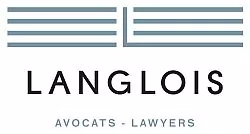On June 28, 2021, the Minister of the Environment and the Fight against Climate Change announced in a press release the adoption of the Regulation respecting the traceability of excavated contaminated soils (the "Regulation"), which was subsequently published in the Gazette officielle du Québec on July 7.
The establishment of a traceability system is aligned with Action 15 of the Soil Protection and Contaminated Sites Rehabilitation Policy and Action Plan for 2017-2021. The Action Plan provided that the Ministry of the Environment and the Fight against Climate Change ("MEFCC") would amend its regulations to allow for more reclamation options for treated or slightly contaminated soil. The Regulation should allow for greater control over the origin, movement and destination of excavated contaminated soil.
1. General provisions
The purpose of the Regulation is to limit and control the contamination caused or likely to be caused by excavated contaminated soil by implementing traceability measures to ensure that the soil is discharged at a site where it may be received.
It applies to all soil that contains contaminants from human activity, regardless of the concentration value of the contaminants.
The Regulation defines "site of origin" as the land from which contaminated soil is excavated, while "receiving site" means any site situated in Quebec where contaminated soil is temporarily or permanently discharged.
The information and documents required by the Regulation must be submitted using Traces Québec, the computer system prescribed by the Minister.
2. Traceability of excavated contaminated soil
Before the contaminated soil may leave its site of origin, a great deal of information must be registered, and various documents submitted, using Traces Québec. The required information includes, in particular, the owner of the soil, the carrier of the soil, the manager of the receiving site at which the soil is to be discharged, and the person qualified to provide attestations. The receiving site manager must provide, where applicable, the ministerial authorization to operate the site or the declaration of compliance, together with a rehabilitation plan that provides for the discharge of contaminated soil.
Before contaminated soil may leave its site of origin, various information related to the transportation of the soil must be logged on a tracking slip, including the address or cadastral designation of the site of origin, the name of the project, and the names and addresses of the person completing the slip, the owner of the site, the carrier of the soil, and the driver of the vehicle used to transport the soil, as well as the vehicle's registration number. The tracking slip must also include information regarding the concentrations of contaminants in the soil, the categories of contaminants, the quantity of soil to be transported, the date of transportation, and the name and address or cadastral designation of the receiving site.
Before the first transportation of contaminated soil from its site of origin, it must be reported in a notice to the Minister indicating the estimated total quantity of soil to be transported. The signatory of the tracking slip must also, within 15 days after the last transportation of the soil, provide the Minister with an attestation stating that all the excavated soil has been recorded on a tracking slip.
Before contaminated soil may be discharged, the receiving site manager must enter various information on the tracking slip, including the registration number of the vehicle used to transport the soil, the date and time at which the soil arrived, the name of the person completing the slip, and the quantity of soil received.
If the contaminated soil is discharged outside of Quebec, the signatory of the tracking slip for the soil must be present when the soil carrier arrives and must obtain from the manager of the receiving site a confirmation of the receipt of the soil and the quantity involved. This document must then be provided to the Minister. In addition, relevant information must be recorded on the tracking slip.
Finally, the carrier of the contaminated soil must use a device compatible with Traces Québec that transmits the geographic position of the soil for the duration of its transportation, even if the soil is transported outside of Quebec.
It should be noted that many of the requirements set out in the Regulation and detailed above do not apply to the transportation of a quantity of contaminated soil equal to or less than 200 metric tonnes. Special provisions also apply to transportation by ship or train, linear projects, accidental discharge and incidental discoveries of contaminated soil.
3. Administrative monetary penalties and criminal sanctions
In the event of a breach of the Regulation, administrative monetary penalties ranging from $500 to $2,000 in the case of an individual and from $2,500 to $10,000 in all other cases may be imposed.
Furthermore, anyone who contravenes any of the provisions of the Regulation is liable to a fine of not less than $2,500 and not more than $1,000,000 in the case of an individual, and not less than $7,500 and not more than $6,000,000 in any other case.
4. Entry into force
The Regulation will come into force on November 1, 2021, with a phased-in application depending on the amount of excavated contaminated soil that is transported. From November until December 31, 2021, it will apply only to the transportation of a quantity of contaminated soil equal to or greater than 5,000 metric tonnes excavated during work that began on or after November 1.
Effective January 1, 2022, the Regulation will also apply to the transportation of a quantity of contaminated soil equal to or greater than 1,000 metric tonnes excavated during work that began after that date. It will also apply to work that was underway before or on that date, but for which a quantity equal to or greater than 1,000 metric tonnes remains to be excavated. Exceptions can be made until January 1, 2023, if a call for tenders was issued before July 7, 2021, or if, in the absence of a call for tenders, a contract was signed before July 7, 2021.
As of January 1, 2022, carriers will have access to the government traceability system and will be able to undergo training and coaching tailored to their needs, according to an information brochure published by the MEFCC. Use of the traceability system will be mandatory as of January 1, 2023.
Finally, as of January 1, 2023, the Regulation will apply to all transportation of excavated contaminated soil occurring on or after that date, regardless of when the excavation of the soil began. There will be no further exceptions, regardless of when the call for tenders was issued or when the contract was signed.
5. Fees payable
On July 21, 2021, a draft Regulation respecting the fees payable with respect to the traceability of excavated contaminated soils (the "Draft Regulation") was published in the Gazette officielle du Québec. The purpose of the Draft Regulation is to prescribe the fees payable to cover the costs of implementing traceability measures to ensure that excavated contaminated soil is discharged at a site where it may be received. The soil covered by the Draft Regulation is that to which the Regulation applies.
The Draft Regulation may be enacted 45 days from its July 21 publication date. It is expected to come into force on November 1, 2021, with a phased-in implementation corresponding to that of the Regulation. Any comments on the Draft Regulation may be submitted to the MEFCC within the 45-day period.
The content of this article is intended to provide a general guide to the subject matter. Specialist advice should be sought about your specific circumstances.

